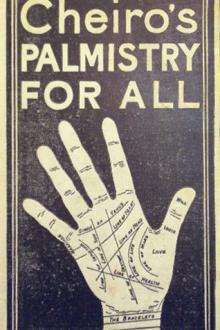The Diary - Samuel Pepys (red white and royal blue hardcover txt) 📗

- Author: Samuel Pepys
Book online «The Diary - Samuel Pepys (red white and royal blue hardcover txt) 📗». Author Samuel Pepys
William Ashburnham (died 1679). See note 3129. ↩
The lease here mentioned was that of the famous Ashburnham House in the Cloisters. The lease was purchased by the Crown of John, Earl of Ashburnham, in 1730, and the Cottonian Library was deposited in the house. In 1731 the disastrous fire occurred there which consumed so many treasures, and injured others. Ashburnham House passed to Westminster School in 1881 in fee simple, in pursuance of the Public Schools Act, 31 and 32 Vict., cap. 118. A view of the fine staircase, still existing in old Ashburnham House, is given in Britton and Brayley’s Public Buildings. ↩
Richard Busby, D.D. (1606–1695), the famous headmaster of Westminster School. In July, 1660, he was installed as Prebendary of Westminster, and in the following August he became canon residentiary and treasurer of Wells. It would be impossible to find a more inappropriate expression to apply to Busby than “devilish covetousness.” He was one of the most charitable of men; and as one instance of this out of many, Mr. J. Sargeaunt, Master at Westminster School, tells the editor that he finds from Busby’s accounts that between February, 1656–57, and the end of the following October, out of a total expenditure of about £670 more than £200 went in direct charity and in repairing the school buildings and the houses which he occupied as prebendary and master. In another year he spent at least a tenth of total expenditure in direct charity. Mr. Sargeaunt adds, “His benefactions to Christ Church were large, and to Wells Cathedral not small. Some works in the Abbey he did at his own expense, as well as works at Willen and in other places. By his will he left practically the whole of his property for charitable uses.” It must be remembered in respect to the Cofferer’s scandalous charge that buyer and seller are seldom of one mind, and that the Dean and Chapter of Westminster Abbey might quite justly take a different view from that held by William Ashburnham. ↩
Frith of Forth. See 5th of this month. ↩
Charles Dormer, second Earl of Carnarvon. Died, s. p., November 29th, 1709. His father, Robert, first earl, was killed at the battle of Newbury, September 20th, 1643, fighting under the royal banner. ↩
Burntisland, a seaport of Fife on the Frith of Forth, five miles north of Granton. April 30th, 1667:
“The Dutch sounded the coast, but Gen. Dalziell cut the beacon at the extreme of Leith harbour, so that they were confused, and battered Burntisland with 1,000 shot, the town returned it from 20 pieces of cannon, and in less than two hours 10,000 were in arms at Burntisland, and as many at Leith, whither more than 6,000 citizens of Edinburgh are gone; the citadel is planted with 30 pieces of cannon, which fired to invite the enemy: the country came up in multitudes. The magistrates of Leith sunk a ship in the mouth of the harbour, and planted 20 cannon on high, whereby a fire-ship that tried to slip in was prevented. They are now gone, it is supposed to Shetland.”
Calendar of State Papers, 1667, p. 62↩
Commissioner Pett wrote from Chatham, on May 24th, to the Navy Commissioners in answer to some of these charges respecting the sale of timber (Calendar of State Papers, 1667, p. 116). ↩
Phil. Lloyd styles himself servant to Sir William Coventry, April, 1667 (Calendar, 1667, p. 10). ↩
See note 2433.
“One unpopular act of his [Clarendon] is not to be forgot, because it had a great influence in a short time, and this was the building a very stately large house by the Park, called Clarendon House, which, in a little time, obtained the name of Dunkirk House, as though it had been built by the money taken for the sale of that place. This house was built in the Chancellor’s absence in the plague year, principally at the charge of the Vintners’ Company, who, designing to monopolize his favour, made it abundantly more large and magnificent than ever he intended or desired. And I have been assured by an unquestionable hand, that when he came to see the case of that house, he rather submitted than consented, and, with a sigh, said, ‘This house will one day be my ruin.’ ”
Echard, vol. iii, p. 192↩
See note 3381. ↩
There are two tokens of “The Three Tuns Tavern in Crutched Friars” (Boyne’s Tokens, ed. Williamson, vol. i, p. 581). ↩
It was Basil who was killed. He was the fourth son of George Fielding, Earl of Desmond, whose eldest son William succeeded his father as second Earl of Desmond in 1666, and his uncle Basil as third Earl of Denbigh in 1675. ↩
At Newcastle House, Clerkenwell Close, the duke and duchess lived in great state. The house was divided, and let in tenements in the eighteenth century. ↩
Randle Holmes says the ladies wore “false locks set on wyres, to make them stand at a distance from the head,” and accompanies the information with the figure of a lady “with a pair of locks and curls which were in great fashion in 1670” (Planché’s Cyclopædia of Costume, vol. i, p. 248). ↩
A new light is thrown upon this favourite expression of Pepys’s when speaking of his wife by the following quotation from a Midland wordbook:
“Wretch, n., often used as an expression of endearment or sympathy. Old Woman to Young Master: ‘An’ ’ow is the missis today,





Comments (0)